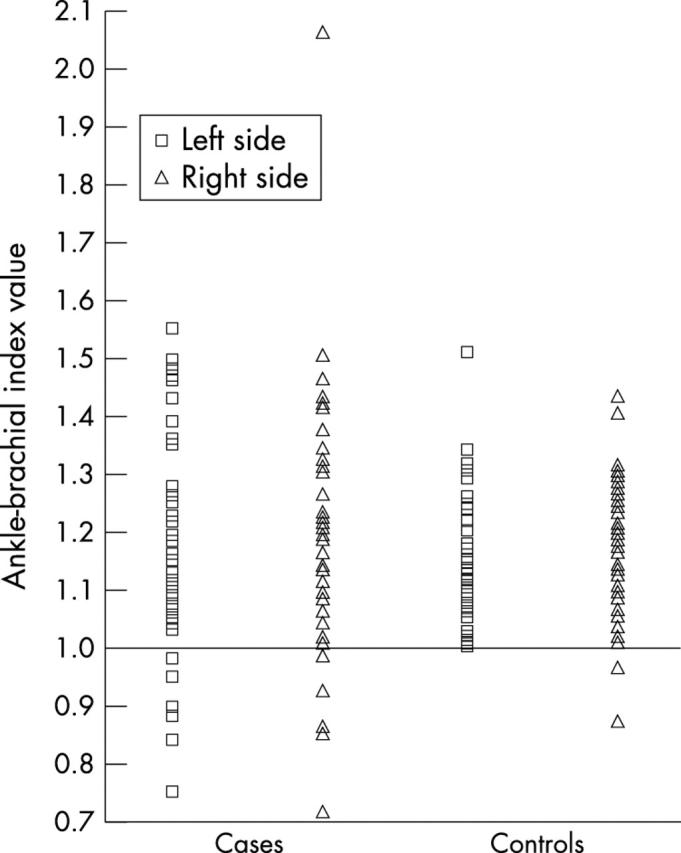Abstract
Methods: An 8 MHz Doppler probe was used in the arms and legs to assess the ABI in 43 patients with primary APS (mean (SD) age 40.2 (7.9) years) and 49 healthy subjects (aged 41.0 (11.7)) matched for age and sex. Data on traditional cardiovascular risk factors, such as hypertension, hypercholesterolaemia, presence of diabetes mellitus, nephrotic syndrome or renal failure, smoking, and other variables, were collected at that time for all subjects. A ratio of the highest blood pressure from the posterior tibial or pedal arteries of each leg to the highest blood pressure from the brachial arteries <1.00 was considered abnormal.
Results: Abnormal ABIs were found in 8/43 (19%) patients with primary APS and 2/49 (4%) controls (p = 0.026). No correlation between abnormal ABI and traditional cardiovascular risk factors nor with the presence of aPL was found.
Conclusion: Abnormal ABIs are more common in primary APS than in healthy controls, possibly indicating a subclinical atherosclerotic process in these patients.
Full Text
The Full Text of this article is available as a PDF (60.6 KB).
Figure 1.

Scattergram showing the distribution of ABI values for cases and controls. Abnormal ABIs can be seen below the line.


